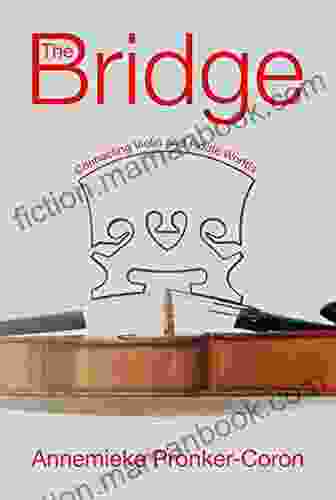The Bridge Connecting Violin and Fiddle Worlds: An Exploration of Similarities and Differences

In the realm of stringed instruments, the violin and the fiddle occupy a captivating place, enchanting listeners with their enchanting melodies and expressive voices. While often perceived as interchangeable terms, these instruments possess unique characteristics that set them apart, creating distinct musical experiences. This article delves into the intricate relationship between violins and fiddles, exploring their shared history, structural similarities, and divergent tonal qualities. We will also unravel the unique techniques and playing styles that define each instrument, ultimately shedding light on the bridge that connects these two captivating worlds.
4.7 out of 5
| Language | : | English |
| File size | : | 7106 KB |
| Text-to-Speech | : | Enabled |
| Screen Reader | : | Supported |
| Enhanced typesetting | : | Enabled |
| Word Wise | : | Enabled |
| Print length | : | 152 pages |
Historical Connections: A Shared Ancestry
The violin and the fiddle trace their origins back to the medieval era, emerging from the evolution of earlier bowed instruments. The rebec, a three-stringed instrument popular in the 15th and 16th centuries, is considered a precursor to both the violin and the fiddle. Over time, the rebec underwent modifications and refinements, giving rise to the violin in Italy and the fiddle in various European countries. Despite their distinct paths, both instruments share a common ancestor, forging an unbreakable bond between them.
Structural Similarities: A Foundation of Craftsmanship
Upon closer examination, the violin and the fiddle reveal striking structural similarities that reflect their shared ancestry. Both instruments feature a hollow body constructed from seasoned tonewoods, typically spruce for the top and maple for the back and sides. This carefully crafted body acts as a resonator, amplifying and enriching the sound produced by the strings. The neck, made from a single piece of hardwood, supports the fingerboard, which is usually made of ebony. The strings, typically gut or steel, are stretched over the fingerboard and bridge, generating vibrations that resonate within the body.
While their overall design is similar, there are subtle differences in the dimensions and proportions of violins and fiddles. Violins tend to be slightly smaller and more delicate, with a narrower body and a more pronounced waist. Fiddles, on the other hand, are generally larger and more robust, featuring a wider body and a less pronounced waist. These variations contribute to the unique tonal qualities of each instrument.
Tonal Divergence: A Matter of Technique and Preference
Despite their structural similarities, violins and fiddles produce distinct tonal qualities that reflect the different playing techniques and musical styles associated with each instrument. Violins, renowned for their sweet and mellow sound, are often played with a classical technique that emphasizes precision, clarity, and vibrato. The bow is held with an underhand grip, and the strings are typically played with a light touch. This combination of factors produces a refined and elegant tone that is well-suited for classical music, chamber music, and solo performances.
Fiddles, on the other hand, are known for their bright and lively sound, which is often attributed to a more rustic playing technique that emphasizes rhythm and improvisation. The bow is held with an overhand grip, and the strings are played with a more forceful stroke. This approach creates a more robust and earthy tone that is ideal for folk music, bluegrass, and Celtic music. In these genres, fiddlers often employ a variety of techniques, such as double stops, slides, and drones, to create a rich and expressive musical tapestry.
Playing Techniques: A World of Nuances
The distinct tonal qualities of violins and fiddles are not only influenced by their construction but also by the playing techniques employed by musicians. Violinists typically play with a classical technique that emphasizes accuracy, intonation, and phrasing. The bow is held with an underhand grip, and the strings are pressed firmly onto the fingerboard. This technique allows for precise control of pitch and dynamics, enabling violinists to execute complex melodies and intricate passages with ease.
Fiddlers, on the other hand, employ a more relaxed and improvisational playing style. The bow is held with an overhand grip, and the strings are played with a lighter touch. This approach allows for greater freedom of expression, enabling fiddlers to create spontaneous melodies and rhythms. Fiddlers often use a variety of techniques, such as double stops, slides, and drones, to enhance the expressiveness of their playing.
Musical Styles: A Spectrum of Expression
The different playing techniques and tonal qualities of violins and fiddles have given rise to a diverse range of musical styles. Violins are most closely associated with classical music, chamber music, and solo performances. Their refined and elegant sound lends itself well to the intricate melodies and harmonies found in these genres. Violins are also used in jazz, pop, and rock music, adding a touch of elegance and sophistication to a wide range of musical styles.
Fiddles, on the other hand, are most closely associated with folk music, bluegrass, and Celtic music. Their bright and lively sound complements the rhythmic drive and melodic ornamentation found in these genres. Fiddles are also used in country music, Cajun music, and other traditional styles, adding a touch of rustic charm and authenticity to the music.
The violin and the fiddle, though often perceived as interchangeable terms, are two distinct instruments with unique characteristics that set them apart. While they share a common ancestry and structural similarities, their tonal qualities and playing techniques diverge significantly, giving rise to a wide range of musical styles. The violin, with its sweet and mellow sound, is ideally suited for classical music, chamber music, and solo performances. The fiddle, with its bright and lively sound, is perfectly suited for folk music, bluegrass, and Celtic music. Understanding the bridge that connects these two captivating worlds allows us to appreciate the rich diversity of the stringed instrument family and the endless possibilities of musical expression it offers.
4.7 out of 5
| Language | : | English |
| File size | : | 7106 KB |
| Text-to-Speech | : | Enabled |
| Screen Reader | : | Supported |
| Enhanced typesetting | : | Enabled |
| Word Wise | : | Enabled |
| Print length | : | 152 pages |
Do you want to contribute by writing guest posts on this blog?
Please contact us and send us a resume of previous articles that you have written.
 Top Book
Top Book Novel
Novel Fiction
Fiction Nonfiction
Nonfiction Literature
Literature Paperback
Paperback Hardcover
Hardcover E-book
E-book Audiobook
Audiobook Bestseller
Bestseller Classic
Classic Mystery
Mystery Thriller
Thriller Romance
Romance Fantasy
Fantasy Science Fiction
Science Fiction Biography
Biography Memoir
Memoir Autobiography
Autobiography Poetry
Poetry Drama
Drama Historical Fiction
Historical Fiction Self-help
Self-help Young Adult
Young Adult Childrens Books
Childrens Books Graphic Novel
Graphic Novel Anthology
Anthology Series
Series Encyclopedia
Encyclopedia Reference
Reference Guidebook
Guidebook Textbook
Textbook Workbook
Workbook Journal
Journal Diary
Diary Manuscript
Manuscript Folio
Folio Pulp Fiction
Pulp Fiction Short Stories
Short Stories Fairy Tales
Fairy Tales Fables
Fables Mythology
Mythology Philosophy
Philosophy Religion
Religion Spirituality
Spirituality Essays
Essays Critique
Critique Commentary
Commentary Glossary
Glossary Bibliography
Bibliography Index
Index Table of Contents
Table of Contents Preface
Preface Introduction
Introduction Foreword
Foreword Afterword
Afterword Appendices
Appendices Annotations
Annotations Footnotes
Footnotes Epilogue
Epilogue Prologue
Prologue By Martha E Ryan
By Martha E Ryan Rohini Gupta
Rohini Gupta Leslie Langtry
Leslie Langtry Richard Dawkins
Richard Dawkins Thomas Sewell
Thomas Sewell Ian C Dawkins Moore
Ian C Dawkins Moore Marc Gregoire
Marc Gregoire Kamran Afary
Kamran Afary Michael A Huggins
Michael A Huggins Diane R Gehart
Diane R Gehart Lisa Mills
Lisa Mills Caleb Howard Courtney
Caleb Howard Courtney Celia Genishi
Celia Genishi Elizabeth Coffey
Elizabeth Coffey Emily Josephine
Emily Josephine Kyle Higgins
Kyle Higgins Lee Vaughan
Lee Vaughan Nikki Giovanni
Nikki Giovanni Matty Layne Glasgow
Matty Layne Glasgow Jeanne Felfe
Jeanne Felfe
Light bulbAdvertise smarter! Our strategic ad space ensures maximum exposure. Reserve your spot today!

 Anton ChekhovUnveiling the Complexities of Betrayal and Redemption in David Eldridge's...
Anton ChekhovUnveiling the Complexities of Betrayal and Redemption in David Eldridge's...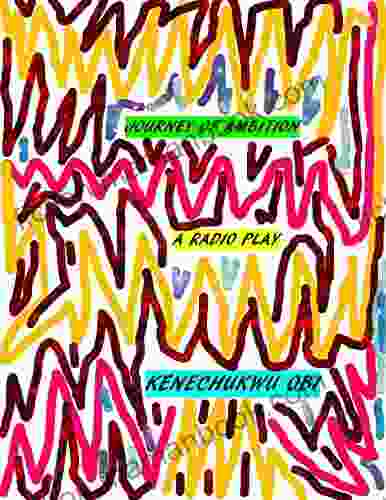
 Ignacio HayesJourney of Ambition: An Immersive Audio Drama Explores the Drive for Success
Ignacio HayesJourney of Ambition: An Immersive Audio Drama Explores the Drive for Success Victor TurnerFollow ·3k
Victor TurnerFollow ·3k Denzel HayesFollow ·7.8k
Denzel HayesFollow ·7.8k Gabriel HayesFollow ·17.8k
Gabriel HayesFollow ·17.8k Drew BellFollow ·18.1k
Drew BellFollow ·18.1k Alex FosterFollow ·11.6k
Alex FosterFollow ·11.6k Luke BlairFollow ·16k
Luke BlairFollow ·16k Herman MitchellFollow ·18k
Herman MitchellFollow ·18k Dan BrownFollow ·7.4k
Dan BrownFollow ·7.4k
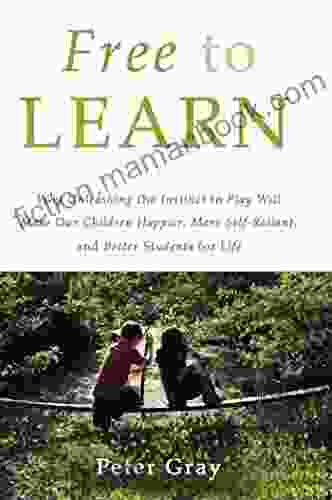
 Abe Mitchell
Abe MitchellWhy Unleashing the Instinct to Play Will Make Our...
Play is an essential part of childhood. It is...
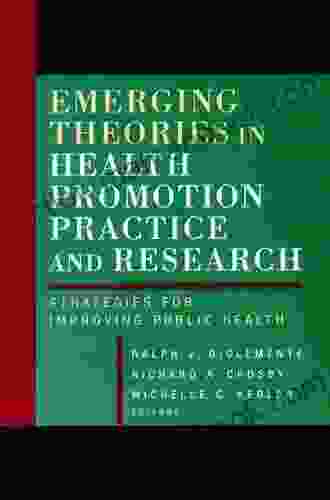
 Rubén Darío
Rubén DaríoTheory in Health Promotion Research and Practice
Theory is essential...
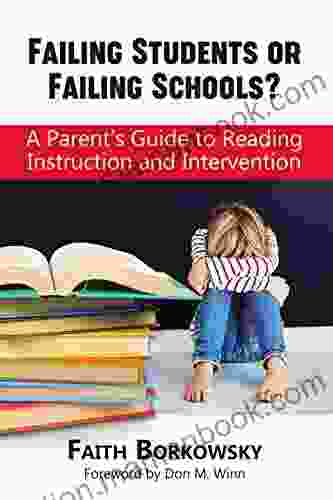
 Howard Blair
Howard BlairFailing Students or Failing Schools: Uncovering the Root...
In the United States, the issue of failing...

 Ira Cox
Ira CoxPoetry From the Heart Chope: A Symphony of Soul and Verse
Embark on a literary...

 Easton Powell
Easton PowellThe Witch Hunt: Wicked Witches of Shadow Woods
In the cursed woods of...
4.7 out of 5
| Language | : | English |
| File size | : | 7106 KB |
| Text-to-Speech | : | Enabled |
| Screen Reader | : | Supported |
| Enhanced typesetting | : | Enabled |
| Word Wise | : | Enabled |
| Print length | : | 152 pages |


